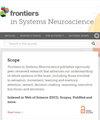探索翻转记忆及其他:训练循环神经网络的重要启示
IF 3.5
4区 医学
Q2 NEUROSCIENCES
引用次数: 0
摘要
训练神经网络来执行不同的任务与各个学科息息相关。特别是,循环神经网络(RNN)在计算神经科学领域具有重大意义。Tensorflow 和 Keras 等专用于机器学习的开源框架为我们目前使用的技术的发展带来了重大变化。本研究通过对 3 位触发器内存实现的研究,全面调查和描述了 RNN 在时间处理中的应用。我们深入研究了整个建模过程,包括方程、任务参数化和软件开发。在一系列可视化和分析工具的辅助下,我们对所获得的网络进行了细致分析,以阐明其动态性。此外,所提供的代码具有足够的通用性,可用于不同任务和系统的建模。此外,我们还介绍了如何在维度缩小的空间中将内存状态有效地存储在立方体的顶点中,以一种独特的方法补充了之前的成果。本文章由计算机程序翻译,如有差异,请以英文原文为准。
Exploring Flip Flop memories and beyond: training Recurrent Neural Networks with key insights
Training neural networks to perform different tasks is relevant across various disciplines. In particular, Recurrent Neural Networks (RNNs) are of great interest in Computational Neuroscience. Open-source frameworks dedicated to Machine Learning, such as Tensorflow and Keras have produced significant changes in the development of technologies that we currently use. This work contributes by comprehensively investigating and describing the application of RNNs for temporal processing through a study of a 3-bit Flip Flop memory implementation. We delve into the entire modeling process, encompassing equations, task parametrization, and software development. The obtained networks are meticulously analyzed to elucidate dynamics, aided by an array of visualization and analysis tools. Moreover, the provided code is versatile enough to facilitate the modeling of diverse tasks and systems. Furthermore, we present how memory states can be efficiently stored in the vertices of a cube in the dimensionally reduced space, supplementing previous results with a distinct approach.
求助全文
通过发布文献求助,成功后即可免费获取论文全文。
去求助
来源期刊

Frontiers in Systems Neuroscience
Neuroscience-Developmental Neuroscience
CiteScore
6.00
自引率
3.30%
发文量
144
审稿时长
14 weeks
期刊介绍:
Frontiers in Systems Neuroscience publishes rigorously peer-reviewed research that advances our understanding of whole systems of the brain, including those involved in sensation, movement, learning and memory, attention, reward, decision-making, reasoning, executive functions, and emotions.
 求助内容:
求助内容: 应助结果提醒方式:
应助结果提醒方式:


